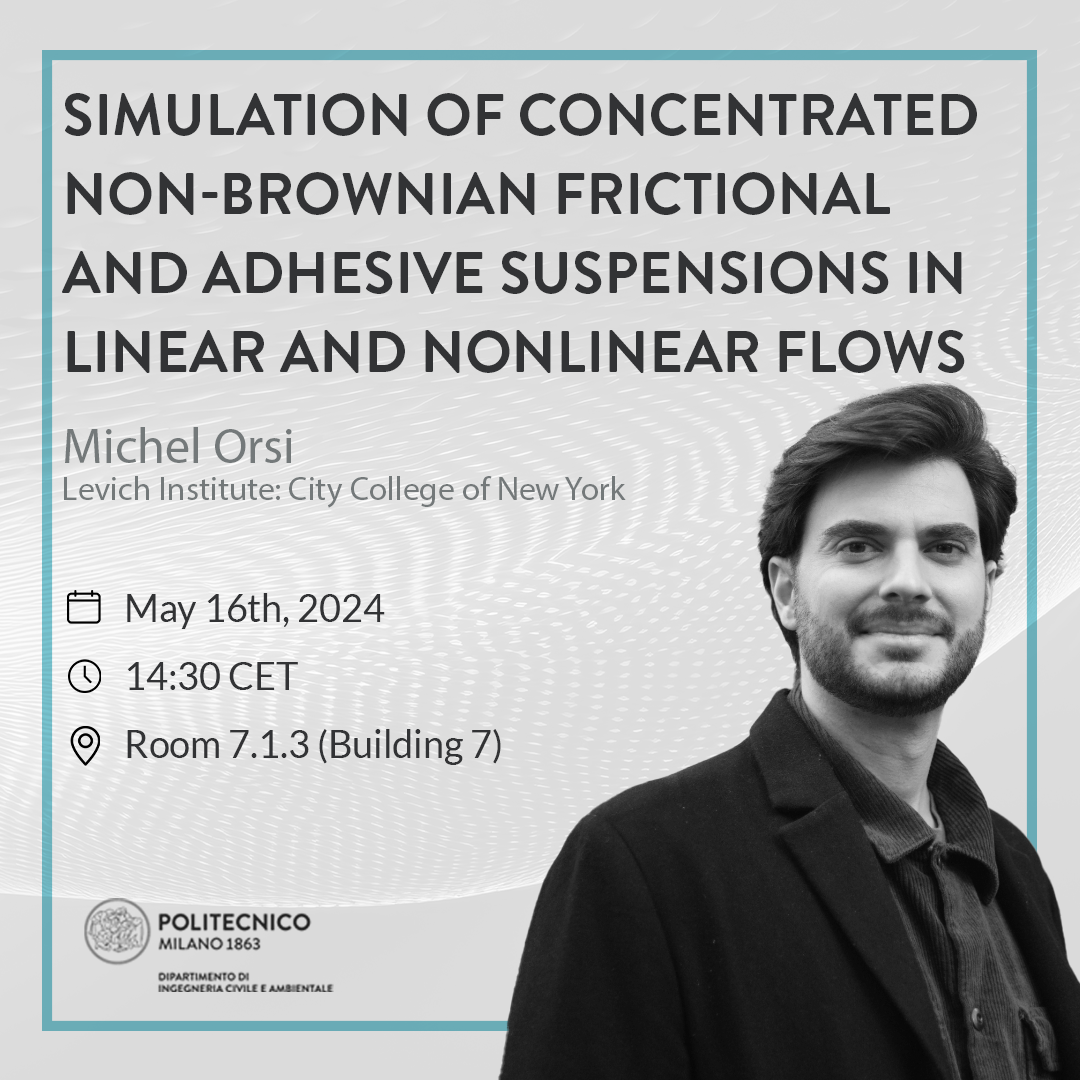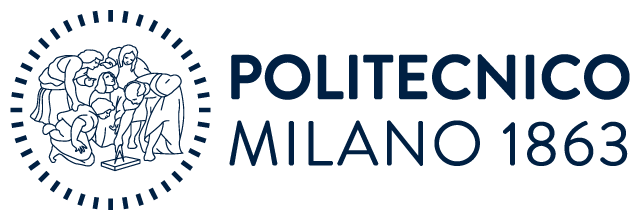
- Questo evento è passato.
Simulation of concentrated non-Brownian frictional and adhesive suspensions in linear and nonlinear flows
16 Maggio 2024 @ 14:30 - 16:30

Giovedì 16 maggio alle ore 14:30 presso l’Aula 7.1.3 (Edificio 7 – p.za Leonardo da Vinci, 32 – Milano) si terrà un seminario dal titolo: “Simulation of concentrated non-Brownian frictional and adhesive suspensions in linear and nonlinear flows“, tenuto da Michel Orsi (Postdoctoral Research Associate and an Adjunct Assistant Professor at the Levich Institute of the City College of New York).
Abstract
I present a particle-scale simulation method for non-Brownian suspension flows at low Reynolds number, based on the Fictitious Domain Method and supplemented by sub-grid lubrication corrections. In their usual form, sub-grid corrections involve the underlying linear flow. In the present work, the conditions required to avoid considering this ambient flow while keeping frame indifference are determined, and a sub-grid correction matrix is built for the particle-particle and particle-wall hydrodynamic interactions such that the mentioned conditions inherently hold. This procedure extends the correct use of such sub-grid corrections to nonlinear flows. Then, I show the role of adhesive forces in frictional suspensions, by varying both the intensity of adhesion and the volume fraction: after presenting the difficulties of simulating adhesive suspensions at low volume fractions due to particle depletion at the wall and shear-banding, I show that the relative viscosity of the suspension is a function of both volume fraction and shear stress. The variation of the viscosity with these two parameters may be understood in the usual frame of suspension jamming, provided that the jamming volume fraction now depends on the dimensionless suspension stress that involves the adhesive force between particles. The variation of the jamming volume fraction with stress may be interpreted as the variation of the yield stress with volume fraction. This curve separates the plane (volume fraction, shear stress) into two regions: one in which the suspension flows and the other in which it jams. I continue by investigating the shear-induced particle migration in a pressure-driven channel suspension flow. In such a system, particles are driven toward the channel center, resulting in a volume fraction gradient across the channel and a plug region where the jamming volume fraction as measured in shear flow may be exceeded. The flow profile is thus highly nonlinear, both due to the pressure gradient and the time-varying concentration gradient, which justifies the use of the present numerical method. I compare the results to a modified version of the Suspension Balance Model, confirming the well-known limits of such a model in the plug region. Finally, I thoroughly show that the computed stresses obey the usual momentum balance in the channel: the tangential stress is indeed driven by the pressure gradient as predicted by theory and the second normal stress (parallel to the velocity gradient) does not vary over the channel width, although contact and hydrodynamic contributions significantly do over both time and space. This confirms the good behavior of the present numerical method when nonlinear flows are tackled.
Speaker’s bio
Michel Orsi got a Bachelor’s degree in Aerospace Engineering and a Master’s degree in Aeronautical Engineering with specialization in Aerodynamics, both at Politecnico di Milano. To complete his Master’s thesis, he went to the Fluid Mechanics and Acoustics Laboratory of the Ecole Centrale de Lyon, where he studied the passive scalar dispersion and mixing in homogeneous isotropic turbulence under the supervision of Pietro Salizzoni, Maurizio Boffadossi, and Raffaele Marino. Then, he joined Elisabeth Lemaire’s group at the Institute of Physics of Nice to pursue a PhD in Physics under the supervision of François Peters and Laurent Lobry, during which he developed a cutting-edge particle-scale numerical method able to correctly simulate both the full hydrodynamics (short- and long-range) and the direct interactions between the particles. He is now a Postdoctoral Research Associate and an Adjunct Assistant Professor at the Levich Institute of the City College of New York, where he is working with Jeff Morris on the direct visualization and mechanical analysis of roller processing of chocolate refining paste and on the rigidity development in shear-thickening dense suspensions.
